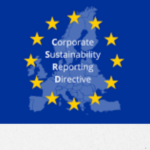New EU Plant Health Regulation 2016/2031: update and specific information for ACP competent authorities on high risk plants
- 31/01/2019
- Posted by: Gaetan Dermien
- Category: Uncategorized
(Feel free to contact us if you need additional information or support from COLEACP)
The new regulation will become fully applicable on 13 December 2019. Among the main changes include special measures covering imports of certain high risk plants and plant products, as well as new requirements for phytosanitary certificates whereby all living plant material (plants, fruit, vegetables, cut flowers, seeds, etc.) will have to be accompanied by a certificate, except for a list of exempted commodities that are known to be low risk.
In July 2018, the first delegated implementing act under the new regulation was published. This specified the list of high risk plants, and the list of plants to be exempted from the requirement to have a phytosanitary certificate:
- The proposed list of high risk plants contains 39 plant species. These consist mainly of plants for planting. The only fruit/vegetable product affected is Momordica (gourd) originating from third countries, or areas of third countries, where the pest Thrips palmi is known to occur.
- The proposed list of plants (other than for planting) that will be exempt from the requirement for a phytosanitary certificate includes: pineapple, coconut, durian, figs, banana and dates.
Note that in future it is likely that other crops may be added to these lists. Furthermore, the EC may bring in additional emergency measures before December 2019 for specific crop/pest problems such as those recently introduced for False Codling Moth on Capsicum and Fall Armyworm.
New Rules and Procedures for High Risk Plants
After December 2019, listed high risk plants and plant products will be prohibited from export into the EU unless and until a detailed risk assessment has been carried out to determine if imports are acceptable and, if so, under what conditions.
Once a plant is listed, the risk assessments will not be conducted automatically. To trigger the process, a request for trade must first be made to the EU. The risk assessment will then be conducted by the EU authorities, generally using additional data provided by the exporting country. After a risk assessment is completed, an EU select committee will evaluate the findings and decide what, if any, special measures are needed.
On December 18th 2018, the EC introduced an implementing act (Regulation (EU) 2018/2018) to explain the rules and procedures that countries will have to follow when they trigger and support risk assessments for high risk plants. The regulation can be found on the EC website and attached to this mail is a supporting publication from the European Food Safety Authority (EFSA); this explains in detail the procedure that must be followed, and the data that will be required from third countries.
At the moment it is only countries that are exporting Momordica that must initiate the process. However, it is very important for all NPPOs to be aware of this, as other crops are likely to be added to the high risk list in the future. As Momordica is currently being exported from Ghana, it is important that you act quickly to ensure that a risk assessment is triggered and completed by December, otherwise there may be a break in trade. Please get back to us if you need additional information or support from COLEACP to help with this process.
COLEACP will continue to provide you with updates on the new plant health rules as new information becomes available. In the meantime, if you need any further clarification on the changes, please get in touch(link sends e-mail) with COLEACP.




![EU and GB approval changes (January-May 2024) 9-FFM+-[ENG]](https://news.colead.link/wp-content/uploads/2024/06/9-FFM-ENG-150x150.jpg)
